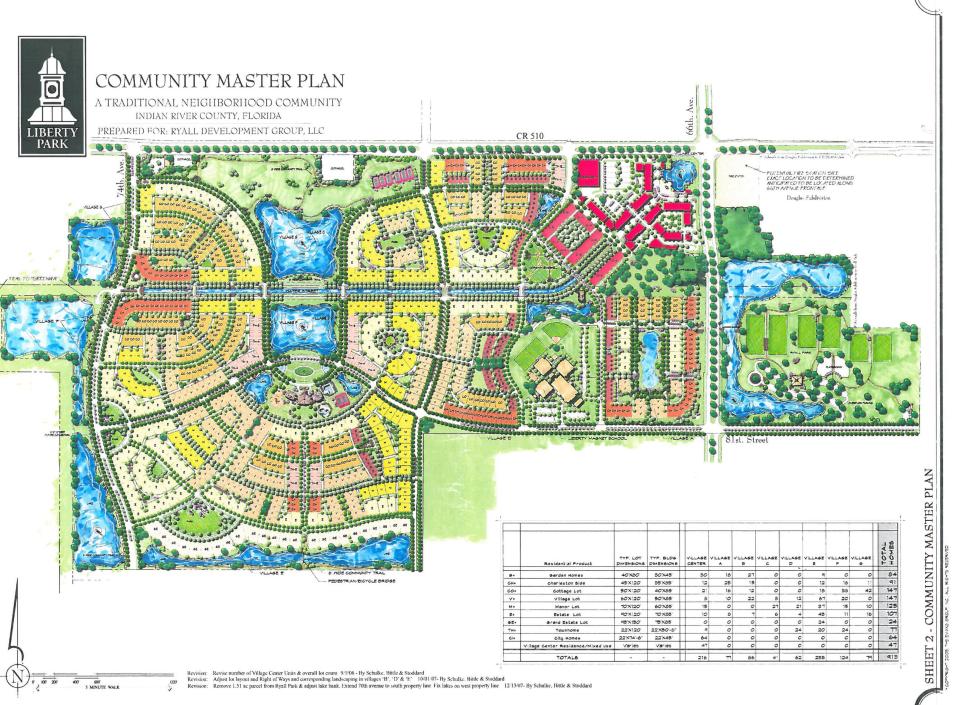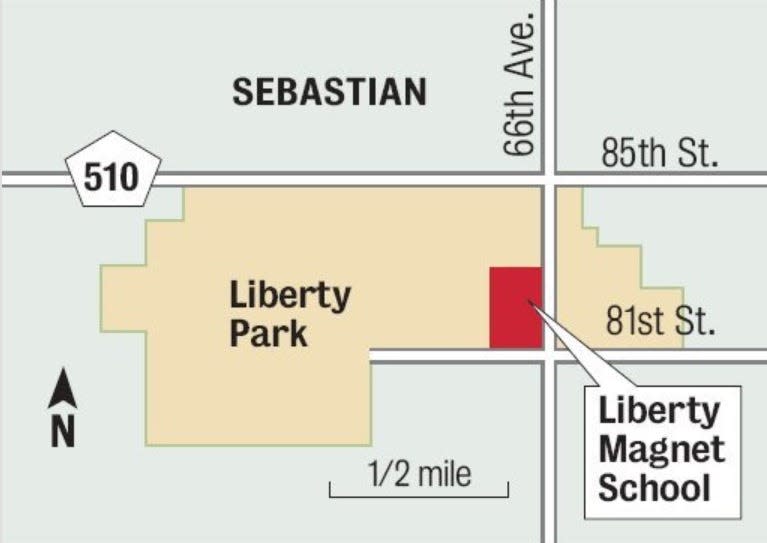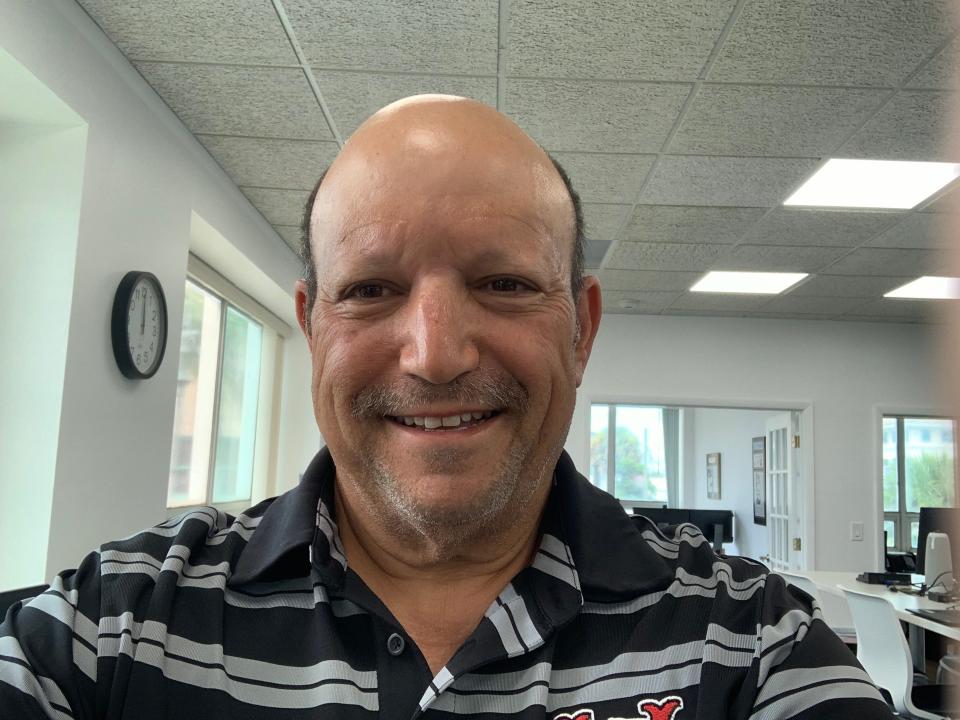Will Indian River open Pandora's box of growth by approving Liberty Park deal? | Opinion
Would allowing developers of a 502-acre parcel south of Sebastian to create their own government to finance $75.9 million in neighborhood infrastructure over six years open a Pandora’s box of growth in Indian River County?
Or would letting Vero Beach-based Ryall Acquisition Group form the county’s first community development district for Liberty Park encourage other developers to build higher-quality, traditional neighborhood design communities laden with public amenities?
Would the issue county commissioners have on the agenda Sept. 13 lead to something else?
I don't know why an attorney for Ryall asked commissioners Sept. 2 to table the meeting until Oct. 18. Neither the attorney nor Ryall representatives Vinny Olmstead or Andrew Kennedy returned my messages.
I do know the company plans 913 homes, 208,900 square feet of commercial and office space — about the size of the Target and Lowe’s shopping center in Vero Beach — and parks at County Road 510 and 66th Avenue. A school already is on the site.
I know residents and officials in Sebastian are concerned about how Indian River County has handled growth, especially along city borders.
It’s one reason city residents are excited 1,984 acres of old Graves Brothers groves, west of Liberty Park, could be annexed into the city. That way, advocates say, the city could chart its own destiny and generate taxes to help pay for impacts development would have.
More: A few things critical in discussing how, if Sebastian should annex 1,984 acres
More: Vero Beach citizen initiative throws wrinkle into critical local elections
More: I-95, Oslo link: Poor planning could spur growth nightmare. Otherwise, it's OK

Rampant growth on horizon?
I’m concerned about all the county’s potential growth, as it is bound to affect us all at some point, whether we are driving to the beach or trying to head west or north before a hurricane. Add in concerns about limited water supply, the environment and local roads, and city and county planners had better get things right.
Just west of Sebastian, Fellsmere’s city manager has been talking with potential buyers of at least 3,700 developable acres of the 5,800-acre Corrigan Ranch north of State Road 60 that went on sale earlier this year.
Rural southwest Indian River County could attract a swarm of bulldozers and rooftops after an Interstate 95 interchange at Oslo Road opens no sooner than 2027.
Last December, I raised the question of whether community development districts — one was proposed for 208 acres (320 homes) bisected by 43rd Avenue Southwest — would be a problem.
“If the commission allows a community development district, others could come,” I wrote of a plan proposed by developer Meritage Homes, which would have spent $22.4 million, including $7 million to $9 million in tax free bonds, to build water and sewer lines, drainage structures and roads, then add landscaping and irrigation. “Growth could run rampant in the county as prospective buyers see lower, but misleading, home prices.”
The district board (similar to Ryall’s plan) initially would have been five employees of the Miami-based developer.
Why would prices seem lower? Without community development districts, the cost of community improvements often is included in lot or home purchase prices.
In CDDs, developers can use their newly created government to get long-term, tax-free financing, which, along with maintenance costs, is rolled into taxes assessed to purchasers of real estate.
Last year, I used an example from a friend in Port St. Lucie to illustrate the issue. His home was valued at only $143,691. Less homestead exemptions, his annual tax bill was $2,426 for property taxes to the city, county and other districts, plus $1,369 in non-ad valorem tax assessments. The assessments owed to his Tradition Community Development District were $716 to pay off developer bonds and an additional $208 for maintenance.
“In other words, tack on 38% to already high city and county taxes and thank the developers,” I wrote. (These numbers did not include homeowners association fees.)
In August, my colleague Blake Fontenay raised red flags over community development districts in Port St. Lucie, where there are 37, including 10 in Tradition.
The CDD fees in some of the 10 districts, where six are controlled by developer Mattamy homes, were $246.73 per single-family home this year, Fontenay wrote. The initial proposal for next year: $381.99 per home, an increase of about 55% on top of all the other government taxes.
More: Proposed community development district in Indian River cause for concern
More: Tradition's carefree lifestyle isn't free. Neighborhood to get big fee increases

Future homeowners share in risk
In December, I noted developers told the county homeowners would know up front what they were getting into.
I quoted Commission Chairman Peter O’Bryan, who wondered whether customers, excited after touring their dream home knowing they could afford the purchase price, would understand the intricacies of paying off developer bonds for decades?
“It’s all put on the future homeowner,” O’Bryan said of Lakeside, a run-of-the mill subdivision. “I don’t think (the developer) has enough skin in the game.”
As Florida’s real estate bubble continues to become pressurized, there’s risk. History shows original developers — remember those from Grand Harbor, Pointe West, The Moorings, Orchid Island? — aren’t always around to complete projects and fulfill promises.
“If it blows up, we get the calls and get the question, ‘How could you have let them do this?’ ” said O’Bryan, who also remembers local history.
Lakeside eventually pulled its request. County staff then devised, with input from developers, including a representative of Ryall, guidelines of when allowing community development districts might make sense.
On June 7, commissioners approved, 4-1, such guidelines. They include:
Minimum of 500 acres.
Traditional or modified traffic grid pattern, where cul-de-sacs and dead-end streets are discouraged and neighboring developments are connected.
At least one non-vehicle route connecting a centralized park or commercial node to a neighboring development.
Other factors, such as open space, must exceed county land regulation requirements.
Inclusion of significant public benefit beyond enhanced amenities and landscaping that will be enjoyed by future property owners of the project.
Commissioner Laura Moss voted against the proposal.
“We’re laying the legal infrastructure … to fast-forward development,” she said. “I can’t shake that concern. … it does not sound good to me.”
You can watch the commission discussion here (starting at 12:48 p.m.).

On June 23, a consultant for Ryall wrote that Liberty Park, initially approved by the County Commission on Oct. 14, 2008, was consistent with the county’s new CDD guidelines, citing four qualifications.
I share Moss’ concerns. In fact, it’s almost as if the county’s CDD guidelines were written for Liberty Park, just 2 acres above the county’s minimum.
For sure, Liberty Park, with parks, open space and a school site that has been used for years, beats the vast majority of new subdivisions in Indian River County. But is it enough to deserve such perks?
Development will occur, but it does not have to happen as fast as in Port St. Lucie or south, central or northeast Florida, where large, often-national developers have taken advantage of CDDs and some residents’ appetites to get amenities they became accustomed to in metropolitan areas they left.
There should be economic reasons for large new developments — real, mixed-use town centers where people can work, live and play — not just new rooftops. We should want development done right, not just better.
When Ryall comes back in October, I hope they have a good argument.
This column reflects the opinion of Laurence Reisman. Contact him via email at larry.reisman@tcpalm.com, phone at 772-978-2223, Facebook.com/larryreisman or Twitter @LaurenceReisman
This article originally appeared on Treasure Coast Newspapers: Liberty Park: Indian River to open Pandora's box of growth? | Opinion

